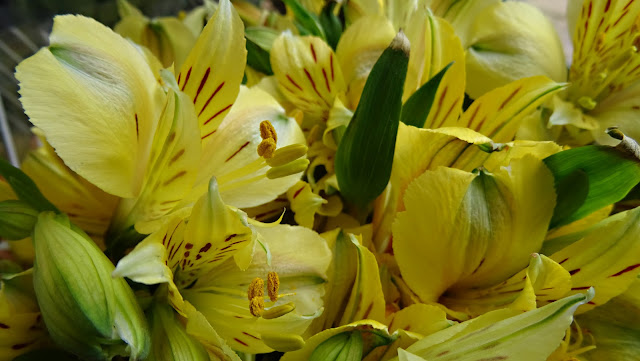Alstroemeria, commonly called the Peruvian lily or lily of the Incas, is a genus of flowering plants in the family Alstroemeriaceae. They are all native to South America although some have become naturalised in the United States, Mexico, Australia, New Zealand, Madeira and the Canary Islands. Almost all of the species are restricted to one of two distinct centres of diversity, one in central Chile, the other in eastern Brazil. Species of Alstroemeria from Chile are winter-growing plants while those of Brazil are summer-growing. All are long-lived perennials except A. graminea, a diminutive annual from the Atacama Desert of Chile. The genus was named after the Swedish baron Clas Alströmer (1736 – 1794) by his close friend Carolus Linnaeus.
Many hybrids and at least 190 cultivars have been developed, featuring many different markings and colours, including white, yellow, orange, apricot, pink, red, purple, and lavender. The most popular and showy hybrids commonly grown today result from crosses between species from Chile (winter-growing) with species from Brazil (summer-growing). This strategy has overcome the florists' problem of seasonal dormancy and resulted in plants that are evergreen, or nearly so, and flower for most of the year. This breeding work derives mainly from trials that began in the United States in the 1980s.
The flower, which resembles a miniature lily, is very popular for bouquets and flower arrangements in the commercial cut flower trade. Most cultivars available for the home garden will bloom in the late spring and early summer. The roots are hardy to a temperature of −5 °C. The plant requires at least six hours of morning sunlight, regular water, and well-drained soil.
This post is part of the Floral Friday Fotos meme.





Lovely collection of flowers, beautiful images. Enjoy your weekend!
ReplyDeleteBeautiful
ReplyDelete